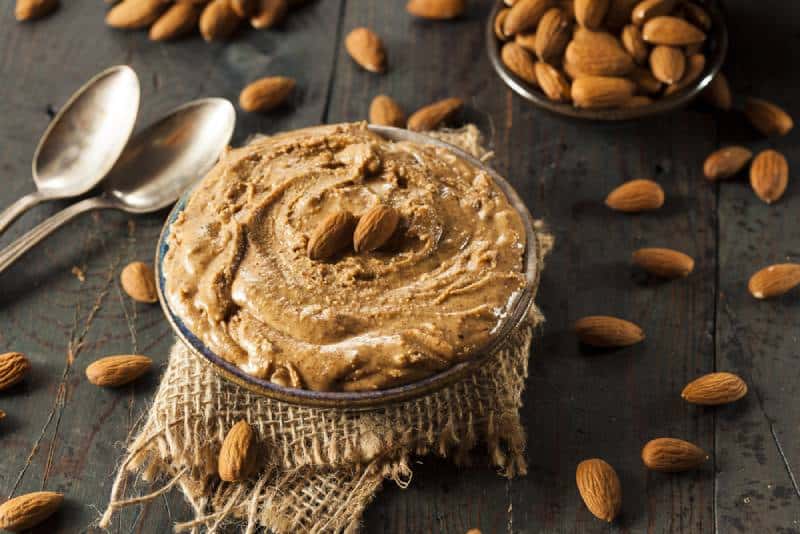As the end of their pregnancy approaches and their anxiety increases, the only thing most moms are interested in is finally reaching that due date – so much so that some moms turn to an alternative medicine called “midwives brew”.
Midwives brew is made from a specific group of ingredients that are said to help induce labor.
Sounds good, right? While that may be the case, one thing you should know is that it can work a bit too well and start labor straight away.
It’s also not something you should be messing around with without the approval of your obstetrician, midwife, family doctor or any other relevant healthcare provider.
This is mostly due to the fact that very little research has been done into midwife’s brew and there is no solid evidence on when it should be taken or what all of its effects and side effects are.
You definitely shouldn’t be taking it prematurely, so wait until you’re at least near your due date (around 38 weeks of pregnancy) before even considering it.
I know that it gets progressively harder to wait and the anxiety ramps up with each passing minute.
Maybe you’re even experiencing prodromal labor (or practice contractions), but your baby is just not ready to come out yet.
You want to finally see your little one, to know that he’s safe, and you want to feel the relief of finally giving birth so you can go back to relative normality.
But, trust me, it’s better for the baby if you wait it out until you’re absolutely sure – or a medical induction is planned – before using midwives brew.
He’s safest in your womb – it was designed to be that way – so try to power through the last few days or weeks for his sake.
You’ve endured 9 long months already, a few more days will feel like nothing compared to that.
With all that said, I believe it’s time to find out just what the most popular version of a midwives brew is made from.
The Contents Of Midwives Brew

While there are various midwives brew recipes out there, there are four ingredients that are always the same – the so called “secret natural labor induction method” and they are:
- Castor Oil
- Almond Butter
- Apricot Juice
- Lemon Verbena Tea
The ratio of the ingredients varies, but it’s usually around 2 tablespoons of almond butter (or some other nut butter if the mom has an almond allergy), 2 tablespoons of castor oil, 300 ml of apricot juice (pineapple is an okay substitute if the former cannot be found) and 250 ml of lemon verbena tea.
All you have to do is prepare the verbena tea as you would any other, let it sit out for a few minutes, and then use it as a base to add the other ingredients to before blending them all up into a kind of smoothie.
Be warned though, the smoothie itself is rancid in both taste and smell! If you have a weak stomach, you’re more than likely going to experience some light vomiting or diarrhea.
I tried making it myself – although I did it outside of my pregnancy – just to see what it was like and it was certainly… something. I became real acquainted with the toilet after consumption!
I know I’m not selling the brew here but it is what it is – a form of medicine, and natural medicines are rarely ever used specifically for their taste.
They go by the old, “bad taste = more potent effect” sort of rule.
Plus, the friends that introduced me to this claim that it helped them induce labor quickly and effectively.
I didn’t trust them on their word alone, though, so I did some research into each specific ingredient to see why this concoction helps motivate pregnant women’s bodies to go into labor sooner.
Lemon Verbena Tea

The base itself works as a sort of relaxant, soothing the effects of the other ingredients by calming your digestive system down as best it can.
It also helps relieve any stress you might have from expecting the baby to come along soon and that might be working against you as you await your hospital birth.
Castor Oil

This is the most powerful of the ingredients found in midwives brew.
While castor oil is primarily used as a laxative, it is used here to encourage the uterine muscles to start cramping in order to begin the birthing process through a series of natural ways to induce labor.
The bad part is that it’s also the cause of the bad taste and the nasty side effects that midwife’s brew has, including nasty diarrhea and vomiting thanks to its laxative properties.
This is why dosage is important and one should never exceed the prescribed amount unless one wants to risk dehydration or worse. Not to mention that it can cause uneven and extremely painful uterine contractions if you overdose.
I’ll repeat again:, do not, under any circumstance take more than the prescribed amount and always, always consult your obstetrician before going through with this.
This ingredient is the sole reason for the warning label in the first place and I’m sure you don’t want to compromise your health or your baby’s well-being.
The severe side effects are also a reason why this potent brew shouldn’t be taken until you’ve reached full term pregnancy, so as to not risk any further complications by going into premature labor.
If that does happen and things don’t go as planned, a c-section may be necessary when one wasn’t originally on the cards.
And, if you do intend to use this drink to aid you with labor, make sure your doula or someone else who is medically trained is at your side just in case something does go wrong.
Apricot Juice

This is mostly used as a diluting agent for the castor oil to improve both the taste and smell.
The apricot juice also gives minor aid around the abdominal area by promoting healthier digestion and helping to soothe the potency of the side effects that the castor oil can trigger – a fact that any old or new mom will be most grateful for if she decides to use midwives brew.
Almond Butter

Almond butter has two uses in this brew.
One is, again, to improve the awful taste of castor oil, while the other is that it’s a great source of monounsaturated fats and all sorts of vitamins and minerals.
The butter enriches the concoction with healthy nutrients that will help your body when it’s ready to go into labor and helps keep the baby healthy with a last minute dose of goodness.
How Effective Is Midwives Brew?

While I’m touting all of the known positive and negative effects here, the truth is that there is no proper confirmation on how well the brew itself works.
The handful of studies conducted into midwife’s brew have given conflicting results.
The ones where volunteer moms were involved showed that it had about a 60% success rate with helping to induce labor.
Meanwhile the more scientific and technical studies, where castor oil was the ingredient investigated, there was no clear indicator as to why it would be helpful in inducing labor.
With that said, for those that claim that it works, the effects were near instant, with the desired effect occurring within 24 hours.
Some women even reported it working as early as 12 hours after consumption if they were past their predicted due date, alongside the other side effects mentioned.
So, really, it’s up to you whether or not you decide to take the plunge and try taking midwives brew – just know that the potency of the effects may vary, if it works at all.
When And How Should You Consume It?

The ideal time is early in the morning so you don’t get caught going into labor in the middle of the night – if the brew does work, of course. Remember, it takes anywhere from 12 to 24 hours to take effect.
It’s also best consumed warm, otherwise it might be even harder to stomach.
As for the how – try getting all of it down within half an hour so you don’t lose out on any of the concoction’s potency.
Given the flavor and the smell, that might prove to be a challenge to rival the birth itself.
The moms I know who’ve tried it say that using ice cubes helped lessen the taste by numbing the taste buds and that a strong, sweet flavor afterwards helped reduce the aftertaste and prevent vomiting.
What To Do If It Doesn’t Work Or If You Don’t Want To Experience The Horrid Flavor
If you’re too put off by the taste and smell, but are still adamant you want to induce labor, there are some other natural labor techniques that you could try.
1. Spicy food

Seeing as digestion and labor seem to be somewhat connected, it’s become a sort of unspoken belief that spicy food might help as an effective labor induction method.
While I’m not a fan of it personally due to my digestive system not being good friends with spicy foods, I have heard that it often works though it might just be some sort of placebo effect.
2. Red raspberry leaf tea

This is a milder version of midwives brew with some similar effects, though it mainly serves to brace your body and your womb for the upcoming stages of labor, helping you remain relaxed and properly hydrated.
3. Nipple stimulation

Hand expressing milk from your breasts or using a pump pre-emptively will help produce the hormone oxytocin.
While normally a ‘love hormone’, this hormone also serves the purpose of kicking labor off by inducing contractions.
That said, you may end up applying more stress to your body if you rely on this method too much, so check with your obstetrician or lactation consultant on the right approach for this procedure.
4. Regular exercise

If your body is healthy, labor will hopefully happen in a timely manner, with few to no complications.
That said, you should stick to light exercise as you don’t want to do anything too strenuous in your current state. There’s a reason why pregnant women ask for help when they’re nearing their due date after all.
Either some light jogging or stretches ought to do the trick.
Or if you’re more about doing some labor exercises, a birthing ball might be just the thing you need.
The baby needs you to move around as little as possible after all so he too can finally prepare to meet you face to face.
5. Simply wait it out

There’s no tragedy in just letting nature take its course and there is no need to take any of the special magic labor induction potions you see advertised on Amazon and elsewhere, or try any miracle birthing recipe that you find on Google.
The safest way of going about it is to just relax.
The right time will come and you’ll soon be looking at the delivery nurse as she hands you your precious bundle of joy in the delivery room.
All of your efforts and your patience will be rewarded right then and there, so what’s the harm in waiting a bit longer?
In Conclusion
Midwives brew seems to be one of the most potent options available if you’re looking to help induce labor on your own.
That said, the taste is awful and there’s a chance you’ll be stuck to the toilet for a bit as you vomit the contents back out if your stomach doesn’t agree with it.
When looking at these alternative methods of labor induction or anything else related to your bodily functions that call themselves medicine, always make sure to consult a healthcare professional first.
They’re there to help advise you on the best course of action and to help minimize the risks if there are any. Remember, there are always risks present when you decide to use alternative medicine.
As much as people on the internet try to give you advice, they’re still only bloggers and the like.
They don’t know your exact situation, nor can they specifically deduce what the issue might be. Hence, their advice alone shouldn’t be enough in situations where there are any potential risks involved.
I know the wait to finally go ahead and deliver your little one is difficult and that the anxiety just keeps building up, especially if you’re a first time mom, but trust me it’s for the best.
That time will pass and soon enough you’ll be smiling warmly as you hold your child in your arms for the first time when the mommy labor nurse hands him over to you.
Like this post? Please share or pin it for later. You can also stay in the loop and follow us on Facebook, Instagram and Pinterest.

This post contains affiliate links. Please see our full disclosure or more info.

